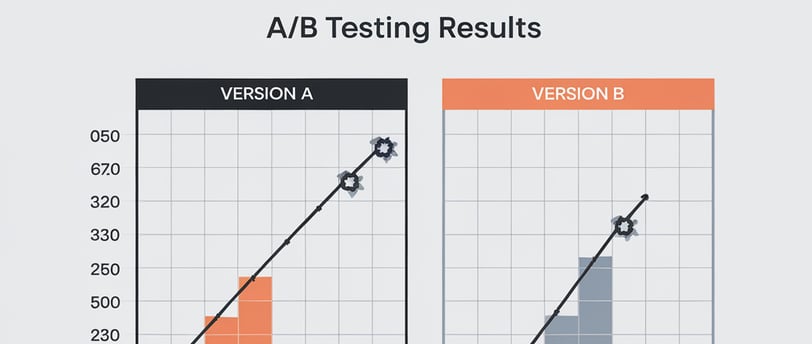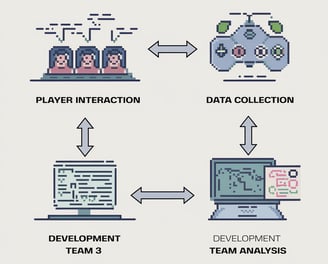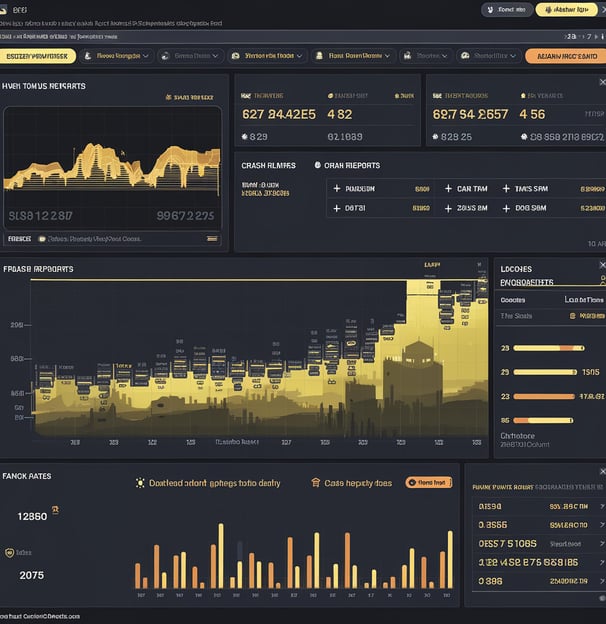"The Importance of Telemetry in Game Development: How CDG Studio Uses Data to Improve Player Experiences"
In today’s competitive gaming landscape, understanding player behavior is more critical than ever. Telemetry—the collection of data from users as they play games—has emerged as a powerful tool for developers to improve gameplay, fine-tune difficulty levels, and enhance player engagement. At CDG Studio, we use telemetry to optimize every aspect of our games, ensuring a seamless and satisfying experience for players. In this blog, we’ll dive into how telemetry works and how we use it to make data-driven decisions that improve our games.


1: What is Game Telemetry?
Telemetry in game development refers to the real-time collection and analysis of data points related to player actions, in-game events, system performance, and more. This data is collected passively while players interact with the game and is sent back to the development team for analysis.
By gathering data on things like how long players spend on each level, where they struggle or succeed, and how they interact with various game features, CDG Studio can make informed decisions that lead to better gameplay, increased retention, and monetization opportunities.
2: Key Benefits of Game Telemetry
Player Behavior Insights: Telemetry allows developers to see how players interact with specific game mechanics. For example, if players are abandoning a level at the same spot, it could indicate a spike in difficulty that needs adjustment. CDG Studio leverages this data to ensure a smooth difficulty curve, reducing frustration and improving player retention.
Optimization of Game Mechanics: By monitoring how often certain items or abilities are used, developers can gauge whether they are balanced or need adjustments. CDG Studio uses this to optimize in-game economies, ensuring that no particular element becomes too powerful or underutilized.
Performance and Stability Monitoring: Telemetry doesn’t just focus on gameplay; it also tracks system performance. CDG Studio monitors factors like frame rate drops, crashes, and load times. By identifying bottlenecks, we can optimize the game’s performance across a wide range of devices.
Monetization Insights: For free-to-play games, understanding how and when players make purchases is key. Telemetry allows us to track in-game purchases, ad engagement, and the effectiveness of promotions. With this data, CDG Studio can adjust monetization strategies for maximum impact without being intrusive.
Player Retention and Engagement: Tracking metrics like daily active users (DAU), session length, and player churn helps CDG Studio keep players engaged. We use these insights to introduce features like daily rewards, timed challenges, or special events to keep players coming back.
3: How CDG Studio Uses Telemetry to Improve Player Experiences
At CDG Studio, telemetry is an integral part of our development process. Here’s how we use it to improve our games:
Level Design Refinement: Telemetry helps us identify where players are spending too much or too little time in the game. For example, if many players are getting stuck on a particular puzzle, we can tweak the difficulty or offer hints. Conversely, if players breeze through a level too quickly, we can add more engaging challenges.
Balancing In-Game Economies: Using telemetry, we analyze how in-game currencies and resources are used by players. If a certain upgrade or item is being purchased too frequently or not at all, we adjust its price, availability, or utility to balance the game’s economy.
Personalizing Player Experiences: By tracking individual player habits, we can personalize experiences. For example, players who prefer certain game modes or mechanics can receive targeted offers or challenges that align with their preferences, making the game feel more tailored to their style.
A/B Testing New Features: Telemetry enables us to conduct A/B testing, where we compare the performance of two different versions of a game feature. This helps us decide which version performs better, leading to data-driven feature implementation.
4: Examples of Telemetry in Action at CDG Studio
Difficulty Adjustment: In one of our puzzle games, telemetry revealed that 40% of players were quitting at the same level. We analyzed the data, realized the level’s difficulty spiked too early, and adjusted it. After the change, player retention on that level improved by 30%.
Monetization Tuning: In another game, telemetry showed that players were more likely to make purchases after achieving small in-game milestones. Based on this insight, we introduced targeted offers that appear at those points, resulting in a 15% increase in in-game purchases.
5: Challenges and Ethical Considerations
While telemetry is a powerful tool, there are some challenges to consider:
Data Overload: With millions of data points, it’s easy to get overwhelmed. CDG Studio focuses on collecting the most valuable data, ensuring that analysis is actionable and meaningful.
Privacy and Transparency: CDG Studio is committed to respecting player privacy. We anonymize all telemetry data and inform players about data collection in our terms of service. Transparency is key to maintaining trust with our player base.
Telemetry has become essential for modern game development, allowing studios like CDG Studio to create more engaging, balanced, and enjoyable gaming experiences. By analyzing player behavior, optimizing game mechanics, and improving performance, we’re able to refine our games continuously. Telemetry isn’t just about numbers—it’s about understanding the player journey and using data to deliver the best possible experience.




